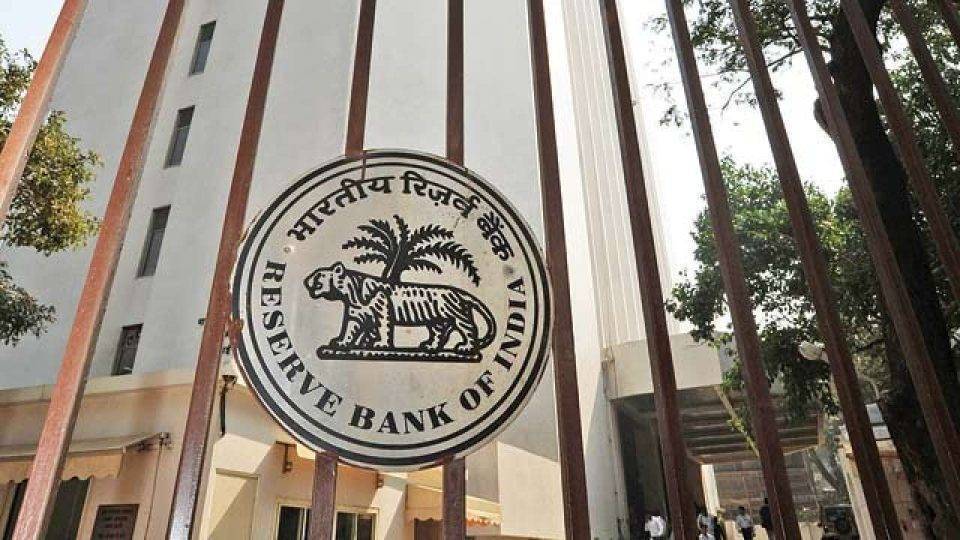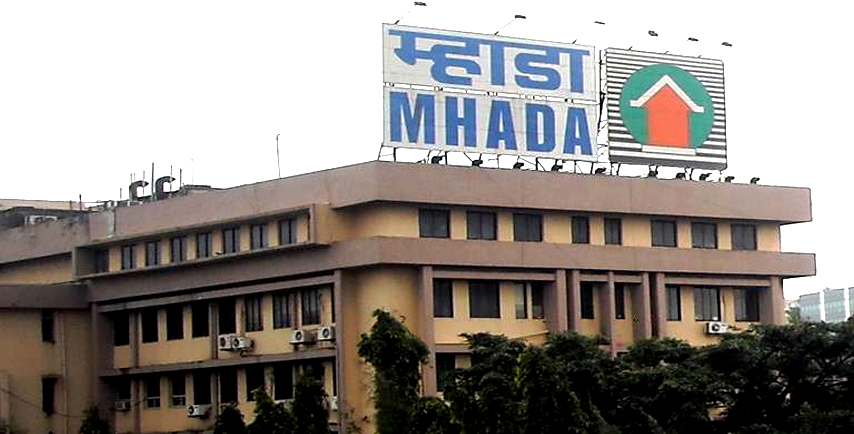The Reserve Bank of India (RBI) kept the key repo rate unchanged at 5.50 percent for the second consecutive time on October 1, 2025. The Monetary Policy Committee (MPC) voted unanimously to maintain the rate and continue with a “neutral” policy stance. The decision follows a series of cuts earlier this year, where the central bank lowered the rate by 100 basis points in the first half of 2025 before pausing in August.
RBI Governor Sanjay Malhotra said the inflation outlook has improved with easing food prices and recent tax reductions. Inflation in August stood at 2.07 percent, near the lower end of the RBI’s tolerance band of 2–6 percent. While India posted a strong GDP growth of 7.8 percent in the April–June quarter, the central bank highlighted risks from slowing global trade and new U.S. tariffs on Indian goods, which could weigh on growth in the coming months.
Economists had largely expected the pause, with a Reuters poll forecasting no change in rates. Some analysts had argued in favor of a cut to support growth, but the RBI chose caution, balancing inflation control with growth stability. The government’s recent move to reduce taxes on consumer goods is expected to boost domestic demand, partly offsetting external headwinds.
Industry Experts Opinion
Mr. Raghav Malhotra, Founder and Director of PRIME Developments said, “The real estate sector is hopeful with the RBI’s August 2025 repo rate decision on keeping the rates unchanged at 5.50%. It will provide confidence in home loan EMIs, enhancing affordability for first - time buyers and fueling festive season demand. This would drive project launches and completions, aligning with heightened Diwali demand. Given a stable inflation and GDP, and a stable repo rate, consumer confidence remains positive with better clarity in the housing finance ecosystem, along with heightened festive buying, and sustained market growth.”
Mr. Pradeep Aggarwal, Founder & Chairman, Signature Global (India) Ltd., said, "We welcome the RBI’s decision to maintain the repo rate at 5.50%, as it brings stability and continuity to India’s financial ecosystem amid global uncertainties. The move is expected to sustain positive momentum across sectors, including real estate, by supporting liquidity, boosting consumer confidence, and encouraging investment activity. With the festive quarter beginning on a strong note and GST reforms further lifting sentiment, the housing sector is likely to continue witnessing steady demand across segments. Traditionally marked by heightened consumer activity, this period creates a favourable environment for property purchases and further strengthens market optimism.
Mr. Rohit Kishore, CEO, Hero Realty said, "The RBI’s decision to keep the repo rate unchanged at 5.5% is a steady and reassuring move for the real estate sector. Stable borrowing costs will benefit both homebuyers and developers. For buyers, it means continued lower EMIs and easier access to home loans, which can encourage more people to buy homes. For developers, the sustained interest rates will help manage costs and finish projects on time. This policy continuity will boost confidence in the market and maintain demand for homes and office spaces. We expect the luxury housing segment to stay strong, especially in metro cities. Lower EMIs and better loan offers will make people more confident to buy. For the real estate industry, especially the residential sector, the RBI’s decision underlines stability and predictability, two factors widely regarded as essential for sustained market health. Stable rates and recent liquidity support from the central bank help developers manage project costs, push new launches, and keep housing supply robust. The continuation of favourable credit conditions and the steady pace of earlier rate cuts also maintain affordability, especially in the mid- and affordable housing segments, and underpin a cautiously optimistic outlook for the market.”
“The RBI’s decision to keep the repo rate unchanged at 5.50% in its August 2025 meeting brings much - needed stability to the housing market. For aspiring homeowners, it means EMIs remain manageable, keeping homeownership within reach. For developers, it supports sustained buyer interest and project planning. At a time where families are making long - term financial decisions, this steady policy stance provides confidence and encourages continued momentum in residential demand", said Mr. Rahul Singla, Director, Mapsko Group.
“The RBI’s decision to maintain the repo rate at 5.5% reinforces economic stability which is valued by long-term investors. However, a rate cut ahead of the festive season could have provided a much-needed boost to homebuyer sentiment. Affordability continues to be a crucial trigger even in premium segments for those awaiting the right financial window to invest. A reduction in rates could have translated into improved affordability, pushing both first-time buyers and investors into action. In metropolitan markets, where ticket sizes are substantial, even a marginal cut can make luxury purchases more accessible and unlock significant demand, ” said Mr. Sandeep Agarwal, Executive Director-Finance & Group CFO, Elan Group.
Mr. Ashok Kapur, Chairman, Krishna Group and Krisumi Corporation, said, "The RBI’s decision to maintain the repo rate at 5.50% reflects a cautious and prudent approach to balancing the twin objectives of economic growth and inflation management. While a rate cut at this juncture would have provided an additional boost to housing demand and overall market activity, the real estate sector continues to benefit from earlier reductions and existing lending rate adjustments by commercial banks. With the positive sentiment of the ongoing festive season and recent GST reforms, the market is expected to see a steady uptick in demand for homes across segments. For developers, the decision to keep rates unchanged provides much-needed stability, enabling careful planning and timely execution while building confidence in the sector’s long-term prospects."Looking ahead, the status quo is set to ensure a stable and balanced growth trajectory for the real estate ecosystem, benefiting developers, buyers, and allied sectors alike."
Mr. Jash Panchamia, Executive Director, Jaypee Infratech Limited, said, "The RBI’s decision to keep the repo rate unchanged reflects a steady and supportive approach to maintaining economic stability, with inflation under control. Following earlier reductions, the current stance provides stability to the housing market, allowing homebuyers and long-term investors to plan confidently. The positive sentiment from the festive season, combined with the transmission of previous rate cuts, is helping maintain strong buyer interest. For developers, consistent interest rates allow for careful planning and execution of projects. Coupled with attractive offerings and well-designed homes, demand remains robust across segments." This stable policy environment is expected to sustain market momentum, support ongoing project launches, and reinforce confidence in long-term growth, ensuring the housing sector continues to thrive and remains appealing to prospective buyers."
Mr. Sudeep Bhatt, Director Strategy, Whiteland Corporation, said, "The RBI’s decision to maintain the repo rate at 5.50% is a strong positive for the Delhi NCR housing market. We've seen steady growth following previous rate cuts this year. For homebuyers, it ensures a stable interest rate environment, boosting confidence. For developers, the pause allows focused project planning and execution without concerns over rising borrowing costs, supporting a robust pipeline for new launches. This will help sustain demand momentum. It’s a clear signal of continued housing sector growth and we expect sentiment across the region to remain optimistic."
Mr. Yashank Wason, Managing Director, Royal Green Realty says, “The Reserve Bank of India’s decision to keep the repo rate steady at 5.5%—following a cumulative cut of 100 basis points earlier this year—offers a strong signal of stability to the real estate sector. By ensuring predictable borrowing costs, this move bolsters consumer confidence, particularly among home loan borrowers who have already gained from earlier rate reductions. With retail inflation easing to a six-year low of 2.1% and GDP growth holding strong at 7.4%, the RBI’s pause reflects confidence in India’s economic fundamentals. This stable interest rate environment is expected to sustain property demand, creating favourable conditions for both buyers and developers.”
“The decision to keep the repo rate steady at 5.5% comes at the right time for the second time consecutively, with inflation easing and growth prospects looking stronger for FY26. A stable interest rate environment gives homebuyers the confidence to take firm decisions, especially when many are looking to upgrade to bigger homes during the festive season. For developers, it creates the right backdrop to push deliveries and launches without the overhang of rate volatility. This stability gives both buyers and developers the confidence to move ahead without added financial pressure.” said Mr. Parvinder Singh, CEO, Trident Realty.
"The decision to keep the repo rate unchanged at 5.5% comes at a critical juncture for the housing market. Homebuyers are already recalibrating budgets to move into more spacious living, and keeping rates steady ensures affordability doesn’t slip out of reach. Even a 25-basis-point hike could have meant thousands more in EMI outgo, which often makes buyers defer decisions. For developers too, with project finance costs elevated and delivery timelines tightening, rate stability allows focus on execution rather than firefighting financial volatility. This will help the festive buying momentum convert into concrete sales, rather than remaining at the level of enquiries or intent.”, said Mr. Ashish Agarwal, Director, AU Real Estate.
“The RBI’s decision to maintain the repo rate at its current level reflects a balanced and cautious approach to sustaining economic growth while keeping inflation in check. For the real estate sector, especially the affordable and mid-segment housing markets, this stability in lending rates is crucial. It encourages homebuyers to make purchase decisions and gives developers like us the confidence to plan long-term projects with clarity. At Womeki, we view this as a positive signal for sustained momentum in housing demand in the coming quarters.”, said Mr. Gaurav K Singh, Chairman and Founder, Womeki Group.
Mr. Mohit Agarwal, Business Head, Conscient Infrastructure Pvt. Ltd said, “The RBI’s decision to keep the repo rate unchanged at 5.5% reflects a cautious and balanced approach toward sustaining economic stability. Continued lower borrowing costs will help preserve affordability for luxury homebuyers and investors, thereby sustaining demand in high-end residential markets. This unchanged stance, coupled with the MPC’s neutral outlook, reinforces confidence among HNIs and NRIs to make strategic real estate investments. As a developer, we continue to benefit from predictable financing costs, enabling steady project execution. We anticipate sustained momentum in the luxury housing sector, especially in metro cities, as stable EMIs and attractive financing options continue to drive buyer confidence.”
“By holding the repo rate steady, the central bank has reinforced its focus on stability over short-term stimulus. The stance highlights a priority to keep inflation anchored while preserving policy space to respond to global and domestic risks. This continuity offers clarity for markets and ensures that future adjustments can be made from a position of strength, aligning monetary policy with long-term economic resilience.”, said Mr. Venket Rao, Founder- Intygrat Law.
“The RBI’s decision of status quo doesn’t come as a surprise. However, lower borrowing costs would have positively influenced affordability and purchasing decisions, particularly in the budget and mid-income segments. For luxury real estate, interest rates aren’t the main trigger and its direct impact on the segment is limited. Over the past few years, there has been a quiet transformation in the way people approach homeownership, especially at the premium end of the market. In a market like Goa, demand from NRIs, HNIs, and serious investors is unlikely to slow. Goa is no longer viewed only as a seasonal retreat and it has grown into an address with global appeal, attracting people who value culture, heritage, exclusivity, wellness, and long-term legacy, reflecting a deeper shift in the emotional and lifestyle priorities of HNI’s in India. The encouraging response we are witnessing in recent times reaffirms Goa’s position as one of India’s most desired luxury markets that is unique and unparalleled, and the momentum from here is set to grow stronger in the near future”, Mr. Lincoln Bennet Rodrigues, Chairman and Founder, Bennet & Bernard.
“The real estate sector plays a pivotal role in the economy, contributing significantly to employment and GDP. As the sector continues to benefit from improved buyer sentiment and strong housing demand, we were looking forward to a supportive stance from the RBI in the monetary policy during the ongoing festive season. A rate cut at this juncture would have been highly encouraging for homebuyers and developers alike, potentially boosting affordability and further investments in the sector. However, the decision to maintain status quo will keep the ongoing residential real estate sales momentum on course, offering homebuyers assurance of steady loan terms. We are hopeful that the real estate sector’s growth momentum will continue to accelerate further and drive long term momentum for home ownership and contributing positively to overall economic expansion. As we move ahead, we would definitely welcome further rate cuts in the near term to build confidence in the market", said, Mr. Ramani Sastri - Chairman & MD, Sterling Developers.
Mr. Anuj Puri, Chairman - ANAROCK Group, said, “RBI's decision to keep the repo rate unchanged at 5.5% maintains home loan EMIs at current levels, which helps sustain buyer sentiment but does not improve housing affordability. This stability means existing home loan borrowers won't see any immediate EMI changes, while new borrowers will find loan interest rates holding steady. As per latest ANAROCK data, Q3 2025 residential sales in India's top 7 cities dropped 9% year-on-year to 97,080 units, yet overall sales value jumped 14% to INR 1.52 lakh crore, indicating demand shifted towards premium and mid-segment homes. However, the recent GST rate cuts provide significant relief. With GST on cement reduced from 28% to 18%, construction costs are expected to fall by 3-5%, potentially reducing home prices by 1-1.5% for buyers. This reduction could save homebuyers INR 1-3 lakh on purchases, particularly benefiting affordable and mid-segment housing where cost sensitivity is high. ANAROCK data shows that affordable housing's share has declined from 38% in 2019 to just 18% in 2024, making these GST cuts crucial for reversing this trend. The combination of stable interest rates and lower construction costs creates a favourable environment for housing demand, especially during the ongoing festive season.”
Mr. Ankur Jalan, CEO, Golden Growth Fund (GGF) said, “In view of the ongoing trade concerns, the status quo on repo rate is a welcome move by the RBI. With interest rates slowing being transmitted, this along with cut in GST will provide impetus to the consumption demand in the economy and help shield India’s growth from the impact of ongoing trade tariffs.”
Mr. Vijay Harsh Jha, founder and CEO of property brokerage firm VS Realtors, said, "The housing sales and launches have shown considerable decline till Q3 and may even fall short of 2024 numbers. At this juncture, a cut in repo rate along with the GST cut that has been implemented, it would have propelled sales during the festive season. Banks must take the lead in passing on the previous cuts to homebuyers."
Sanjeevini Group Chairman and Founder, Mr. Umesh Gowda H.A, said, “While we welcome the RBI’s decision to maintain status quo in view of the ongoing trade tensions, however, a cut in repo rate along with GST cut would have together made a huge impact on giving a spurt to demand. With slowing housing sales, it is imperative that a boost to the housing sector would go a long way in accelerating demand across all sectors.”
Mr. Piyush Bothra, Co-Founder & CFO, Square Yards, said, “The decision to keep the repo rate unchanged at 5.5% came as no surprise, given the crosscurrents in the economy. On the domestic front, the growth outlook remains firm with the international agencies such as the IMF revising forecasts upward, inflation largely contained, and GST 2.0 reforms adding further impetus. The 100 basis points of easing delivered earlier in the year are still working their way through the system. At the same time, global risks persist with US tariffs, tighter immigration policies, and a weaker rupee creating pressure. In housing, lower home loan rates alongside the festive season are driving a visible pickup in demand. While another cut would have added momentum, the case for further easing toward year-end remains strong.”
Mr. Vimal Nadar, National Director and Head of Research, Colliers India, said, “With the RBI maintaining the repo rate at 5.5% for the second consecutive time, monetary policy continues to support stability amidst external trade frictions and fast changing global economic narrative. This pause, along with the Central bank’s ‘neutral’ stance, reflects cautious optimism which factors in the resilient domestic economy and moderating inflation levels. The Central Bank has consequently revised the GDP growth projection upwards by 30 basis points to 6.8% for FY 2025-26. Banks are yet to fully transmit the earlier 100 basis points repo rate reduction and is expected to be completed soon in the ongoing festive season. This is expected to benefit the real estate sector, especially homebuyers in the affordable and mid-income segments. Additionally, the recent GST rationalization in key construction materials such as cement can allow room for developers to lower prices and offer lucrative deals to push housing sales. Overall, timely GST rationalization, stable financing costs and festive discounts augur well for real estate, especially housing, warehousing, retail and hospitality demand.”
Mr. Amit Prakash, Co-founder & CBO, Urban Money, said, “Keeping the repo rate unchanged at 5.5% reflects a wait-and-watch approach. Domestic indicators are holding up well with steady growth, moderate inflation, and the gains of earlier easing still unfolding. At the same time, global uncertainty and currency weakness argue against pushing policy too far. For borrowers, the environment is already improving with banks gradually reducing lending rates, helping sustain household consumption and credit demand. The pause allows space for the impact of past actions to play out, while leaving scope for the central bank to step in with fresh easing if needed in ensuing months.”
Mr. Amit Goyal, Managing Director, India Sotheby’s International Realty, said, “The RBI’s decision to hold the repo rate at 5.50% offers stability at a time when both homebuyers and investors are seeking clarity. For end-users, steady borrowing costs help sustain affordability and confidence, particularly as demand for larger, lifestyle-driven homes continues to grow. For investors, predictability in monetary policy reinforces India’s appeal as a resilient, high-growth real estate market, especially in the luxury segment, where global capital is showing rising interest. This pause is about signaling long-term confidence — an opportunity for the industry to consolidate demand, innovate, and deliver with greater consistency.”
Going forward, the RBI will likely weigh domestic consumption trends, the durability of recent tax-driven demand support, and external factors such as commodity price shifts and global monetary policy signals. While the central bank has paused for now, its future course will depend on whether inflation remains anchored near the lower end of the tolerance band and if growth momentum sustains beyond the first quarter’s strong showing. Any sustained weakness in exports or private investment, coupled with external pressures from higher U.S. tariffs, could increase the case for additional monetary easing. Conversely, a resurgence in food or energy inflation may limit scope for cuts, keeping policy focused on maintaining overall financial stability.









.png)